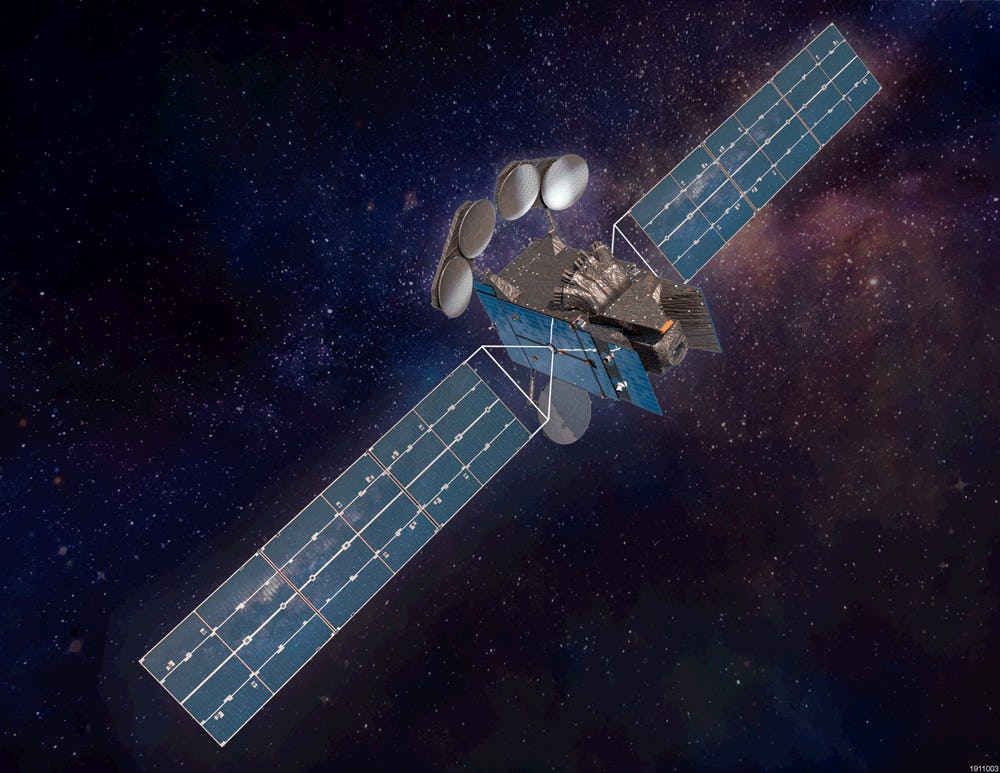
A new space instrument called TEMPO will target North America’s air pollution problem, and highlights one of its big challenges.
The Tropospheric Emissions: Monitoring Pollution instrument, or TEMPO, will gather pollution data across North America. On Tuesday, representatives from NASA and the Smithsonian Astrophysical Observatory (part of the Center for Astrophysics | Harvard and Smithsonian in Cambridge, Massachusetts) spoke about the soon-to-launch project, in an event held at the Smithsonian National Air and Space Museum in Washington, D.C.
Atmospheric physicists and NASA officials on Tuesday called this a major step forward in pollution monitoring. TEMPO will let scientists see emissions as they occur throughout the day, hour by hour, instead of a single sampling. The project involves members from the National Oceanic and Atmospheric Administration (NOAA) and the Environmental Protection Agency (EPA).
“The satellites that we’re currently using [to monitor pollution] are orbiting the Earth at about 700 kilometers above the surface, about 14 to 15 times a day. These orbiters go over a particular place on Earth, usually at the same time of day. So every day we can get measurements, say, over New York City at 1:30 p.m. in the afternoon,” Caroline Nowlan, an atmospheric physicist at the Harvard & Smithsonian Center for Astrophysics, said Tuesday.
But that’s just one data point about the city over a day, Nowlan said; there are two rush hours from which scientists cannot capture data, for example.
TEMPO’s hourly measurements over North America will show variability to pollution at small scales across North America, down to small regions within cities.
TEMPO’s ultraviolet and visible light detectors will allow scientists to zero in on three pollution gasses. First on the list is asthma-inducing nitrogen dioxide, released into the atmosphere from burning fuel. This is a primary pollutant; it creates TEMPO’s two other pollutants of interest, ozone and formaldehyde. Ozone is beneficial in the upper atmosphere, but lower to the ground, it is harmful to crops and creates smog. Formaldehyde, an exhaust and manufacturing by-product, has been shown to cause cancer, according to the American Cancer Society.
TEMPO will work during the daytime. It will look at sunlight reflecting off Earth’s atmosphere. Scientists then will dissect this data to gauge what pollutants are present, and where. It’s done through a technique called spectroscopy. Scientists use a similar approach to learn about planets within and beyond our Solar System or galaxies at the dawn of the Universe. Since different gas emissions take on different colors. TEMPO can track where the primary and secondary pollutants are released, and see where the wind carries them.
TEMPO will sit on a satellite, called Intelsat 40E, that will orbit Earth in a geostationary orbit.

“A geostationary orbit is an orbit where the satellite goes around the planet at the same time that the planet rotates,” Nowlan explained. In this orbit, TEMPO will essentially hover over one region of Earth, in this case, North America.
This summer, the science team will take data from New York City, Los Angeles, and Chicago to help interpret the early TEMPO data, Barry Lefer, tropospheric composition program manager at NASA headquarters, said on Tuesday.
“One of the nice things about TEMPO is we’ll be able to work with our partners at the EPA and tell them, maybe you should put a monitor here, we’re seeing a lot of NO2 and maybe we’re not sure what the source is,” Lefer said.
“The EPA currently only knows air pollution where they have monitors. And so this is a combination of having the satellite view and the ground-based measurements together to really give us the most information,” he adds, also stating that while “NASA, NOAA, and the EPA have been working together for decades,” TEMPO “is really going to add to that partnership.”
TEMPO and Intelsat 40E are currently scheduled to launch on April 7 aboard a SpaceX Falcon 9 rocket from Kennedy Space Center in Cape Canaveral, Florida. Ball Aerospace built TEMPO, and Maxar Technologies integrated TEMPO onto the satellite.







